 W
WAudio mixing is the process by which multiple sounds are combined into one or more channels. In the process, a source's volume level, frequency content, dynamics, and panoramic position are manipulated or enhanced. This practical, aesthetic, or otherwise creative treatment is done in order to produce a finished version that is appealing to listeners.
 W
WAudio mixing is the process by which multiple sounds are combined into one or more channels. In the process, a source's volume level, frequency content, dynamics, and panoramic position are manipulated or enhanced. This practical, aesthetic, or otherwise creative treatment is done in order to produce a finished version that is appealing to listeners.
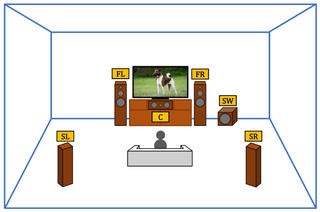 W
WThe fundamental principle of bass management in surround sound replay systems is that bass content in the incoming signal, irrespective of channel, should be directed only to loudspeakers capable of reproducing it, whether the latter are the main system loudspeakers or one or more special low-frequency speakers (subwoofers). There are notation differences between the pre-bass-managed signal and after it has passed through the bass manager. For example, when using 5.1 surround sound:
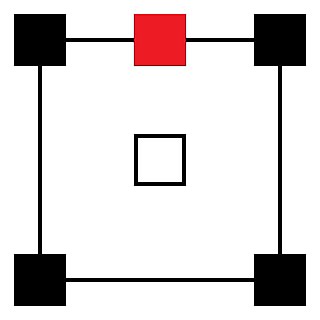 W
WCenter channel refers to an audio channel common to many surround sound formats. It is the channel that is mostly, or fully, dedicated to the reproduction of the dialogue of an audiovisual program. The speaker(s) connected to the center channel are placed in the center of and behind the perforated projection screen, to give the effect that sounds from the center channel are coming from the screen. In many home surround sound units, the center channel is positioned above or below the video screen.
 W
WThe Chronophone is an apparatus patented by Léon Gaumont in 1902 to synchronise the Cinématographe (Chrono-Bioscope) with a disc Phonograph (Cyclophone) using a "Conductor" or "Switchboard". This sound-on-disc display was used as an experiment from 1902 to 1910. In January 1911, the industrial exploitation started at the Olympia. Chronophone would show Phonoscènes and Filmparlants almost every week from 1911 until 1917 at the Gaumont Palace, "the Greatest Cinema Theatre in the World", previously known as the Paris Hippodrome.
 W
WThe Deep Note is THX's sound trademark, a distinctive synthesized crescendo that glissandos from a relatively narrow frequency spread to a broader frequency spread. It was created by James A. Moorer, a former employee of Lucasfilm's Computer Division in late 1982. The sound is used on trailers for THX-certified movie theaters, home video releases, video games, and in-car entertainment systems.
 W
WThe Dickson Experimental Sound Film is a film made by William Dickson in late 1894 or early 1895. It is the first known film with live-recorded sound and appears to be the first motion picture made for the Kinetophone, the proto-sound-film system developed by Dickson and Thomas Edison. The film was produced at the "Black Maria", Edison's New Jersey film studio. There is no evidence that it was ever exhibited in its original format. Newly digitized and restored, it is the only surviving Kinetophone film with live-recorded sound.
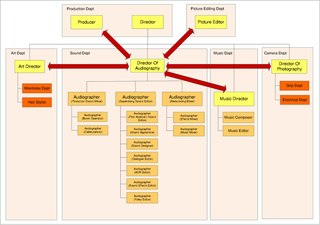 W
WThe director of audiography, (DA) within Indian-style filmmaking, known elsewhere as a Sound Director, is the head of the sound department and the person responsible for planning the audiography and managing the audiographers of a film. The title is not used professionally in most of the world. The role of audiographer and the title "director of audiography" derives from Bollywood-style filmmaking in India, where it is an established title credit. The DA works to carry out the director's vision, identifies the tasks necessary to realize this vision, budgets for those tasks and coordinates all the work from pre-production to post-production whilst keeping an eye on overall sound quality.
 W
WDolby Atmos is a surround sound technology developed by Dolby Laboratories. It expands on existing surround sound systems by adding height channels, allowing sounds to be interpreted as three-dimensional objects. Following the release of Atmos for the cinema market, a variety of consumer technologies have been released under the Atmos brand, using in-ceiling and up-firing speakers.
 W
WDolby Laboratories, Inc. is an American company specializing in audio noise reduction and audio encoding/compression. Dolby licenses its technologies to consumer electronics manufacturers.
 W
WDTS, Inc. is an American company that makes multichannel audio technologies for film and video. Based in Calabasas, California, the company introduced its DTS technology in 1993 as a higher-quality competitor to Dolby Laboratories, incorporating DTS in the film Jurassic Park (1993). The DTS product is used in surround sound formats for both commercial/theatrical and consumer-grade applications. It was known as The Digital Experience until 1995. DTS licenses its technologies to consumer electronics manufacturers.
 W
WFoley is the reproduction of everyday sound effects that are added to films, videos, and other media in post-production to enhance audio quality. These reproduced sounds, named after sound-effects artist Jack Foley, can be anything from the swishing of clothing and footsteps to squeaky doors and breaking glass. Foley sounds are used to enhance the auditory experience of the movie. Foley can also be used to cover up unwanted sounds captured on the set of a movie during filming, such as overflying airplanes or passing traffic.
 W
WGlen Glenn Sound was an audio post production company formerly located in Hollywood, Los Angeles, California.
 W
WThe Kinetoscope is an early motion picture exhibition device. The Kinetoscope was designed for films to be viewed by one individual at a time through a peephole viewer window at the top of the device. The Kinetoscope was not a movie projector, but introduced the basic approach that would become the standard for all cinematic projection before the advent of video, by creating the illusion of movement by conveying a strip of perforated film bearing sequential images over a light source with a high-speed shutter. A process using roll film was first described in a patent application submitted in France and the U.S. by French inventor Louis Le Prince. The concept was also used by U.S. inventor Thomas Edison in 1889, and subsequently developed by his employee William Kennedy Laurie Dickson between 1889 and 1892. Dickson and his team at the Edison lab also devised the Kinetograph, an innovative motion picture camera with rapid intermittent, or stop-and-go, film movement, to photograph movies for in-house experiments and, eventually, commercial Kinetoscope presentations.
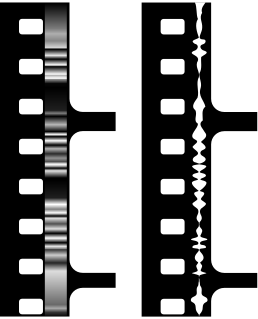 W
WThe Movietone sound system is an optical sound-on-film method of recording sound for motion pictures that guarantees synchronization between sound and picture. It achieves this by recording the sound as a variable-density optical track on the same strip of film that records the pictures. The initial version was capable of a frequency response of 8500 Hz. Although sound films today use variable-area tracks, any modern motion picture theater can play a Movietone film without modification to the projector. Movietone was one of four motion picture sound systems under development in the U.S. during the 1920s, the others being DeForest Phonofilm, Warner Brothers' Vitaphone, and RCA Photophone, though Phonofilm was primarily an early version of Movietone.
 W
WThe Phonoscène was an antecedent of music video and was regarded by Michel Chion, Noël Burch and Richard Abel as a forerunner of sound film. The first Phonoscènes were presented by Léon Gaumont in 1902 in France. The first official presentation in the United Kingdom took place at Buckingham Palace in 1907. The last phonoscène was presented in 1917.
 W
WA production sound mixer, location sound recordist, location sound engineer, or simply sound mixer is the member of a film crew or television crew responsible for recording all sound recording on set during the filmmaking or television production using professional audio equipment, for later inclusion in the finished product, or for reference to be used by the sound designer, sound effects editors, or foley artists. This requires choice and deployment of microphones, choice of recording media, and mixing of audio signals in real time.
 W
WSkywalker Sound is the sound effects, sound editing, sound design, sound mixing and music recording division of Lucasfilm. Its main facilities are located at George Lucas's Skywalker Ranch in Lucas Valley, near Nicasio, California.
 W
WSony Dynamic Digital Sound is a cinema sound system developed by Sony, from which compressed digital sound information is recorded on both outer edges of the 35 mm film release print. The system supports up to eight independent channels of sound: five front channels, two surround channels and a single sub-bass channel. The eight channel arrangement is similar to large format film magnetic sound formats like Cinerama and Cinemiracle. The five front channels are useful for very large cinema auditoriums where the angular distance between center and left/right channels may be considerable. SDDS decoders provide the ability to downmix to fewer channels if required.
 W
WA sound film is a motion picture with synchronized sound, or sound technologically coupled to image, as opposed to a silent film. The first known public exhibition of projected sound films took place in Paris in 1900, but decades passed before sound motion pictures were made commercially practical. Reliable synchronization was difficult to achieve with the early sound-on-disc systems, and amplification and recording quality were also inadequate. Innovations in sound-on-film led to the first commercial screening of short motion pictures using the technology, which took place in 1923.
 W
WSound scenography is the process of staging spaces and environments through sound. It combines expertise from the fields of architecture, acoustics, communication, sound design and interaction design to convey artistic, historical, scientific, or commercial content or to establish atmospheres and moods.
 W
WSound-on-film is a class of sound film processes where the sound accompanying a picture is recorded onto photographic film, usually, but not always, the same strip of film carrying the picture. Sound-on-film processes can either record an analog sound track or digital sound track, and may record the signal either optically or magnetically. Earlier technologies were sound-on-disc, meaning the film's soundtrack would be on a separate phonograph record.
 W
WSounddogs.com, Inc. is a commercial online library of sound effects based in Marina Del Rey, California, with offices in Canada, Argentina, and Uruguay. It is the first and largest online sound effects and production music library on the Internet launched in May 1997. As of 2016, 708,636 sound effects and production music tracks are available for immediate download or on hard drive or CD. Downloads are available in AIFF, WAV, and MP3 formats. Sounddogs started as a sound design and editorial company in 1990 and has contributed to more than 150 feature films and earned multiple awards and nominations from the BAFTA Award, Primetime Emmy Award and Golden Reel Awards.
 W
WSurround sound is a technique for enriching the fidelity and depth of sound reproduction by using multiple audio channels from speakers that surround the listener. Its first application was in movie theaters. Prior to surround sound, theater sound systems commonly had three "screen channels" of sound that played from three loudspeakers located in front of the audience. Surround sound adds one or more channels from loudspeakers to the side or behind the listener that are able to create the sensation of sound coming from any horizontal direction around the listener.
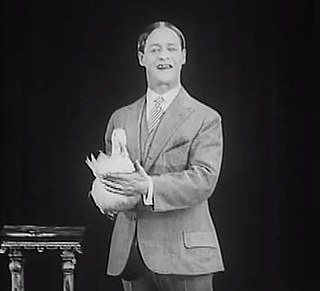 W
WTheodore Case Sound Test: Gus Visser and his Singing Duck, also known as Gus Visser and His Singing Duck, is a 1925 American short musical comedy film starring vaudeville performer Gus Visser. The short is an early sound film, directed by Theodore Case while perfecting his variable density sound-on-film process. Case began working on his sound film process at the Case Research Lab in Auburn, New York, in 1921.
 W
WTHX Ltd. is an American company founded in 1983 by George Lucas and headquartered in San Francisco, California. It develops the "THX" high fidelity audio/visual reproduction standards for movie theaters, screening rooms, home theaters, computer speakers, gaming consoles, car audio systems, and video games. THX Ltd. is a subsidiary of Singaporean multinational technology company Razer Inc..
 W
WVitaphone was a sound film system used for feature films and nearly 1,000 short subjects made by Warner Bros. and its sister studio First National from 1926 to 1931. Vitaphone was the last major analog sound-on-disc system and the only one which was widely used and commercially successful. The soundtrack was not printed on the film itself, but issued separately on phonograph records. The discs, recorded at 33 1⁄3 rpm and typically 16 inches (41 cm) in diameter, would be played on a turntable physically coupled to the projector motor while the film was being projected. It had a frequency response of 4300 Hz. Many early talkies, such as The Jazz Singer (1927), used the Vitaphone system. The name "Vitaphone" derived from the Latin and Greek words, respectively, for "living" and "sound".